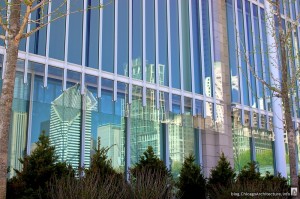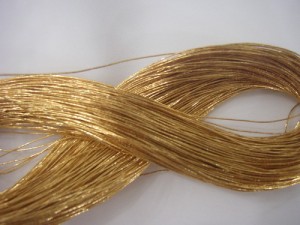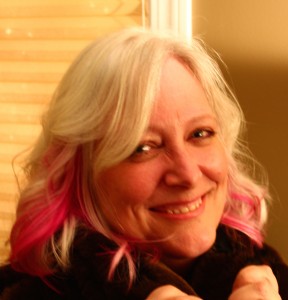Edmonton-based Karen Matthews and Judy Sillito are partners in Weasel Tale, a company that facilitates workshops on digital storytelling. I recently invited the two women to present workshops as part of my annual summer Turquoise Waters Writers’ Retreat in the Kawartha Lakes, Ontario, where I’ll be leading workshops as well. I have an enthusiastic returning bunch of writers every summer, and I knew they’d be up for this challenge. On the fourth night of our retreat, we’ll enjoy a screening of everyone’s short videos. There’ll be popcorn too, of course.
How did these women discover and become passionate about this form of storytelling? Here’s Karen’s tale:
 I STEP OFF THE ELEVATOR, and I’m faced with a phalanx of mannequins wearing spiked and feathered corsets. Stylish young women glide by. One swipes a card that opens a door, and I slip through behind her before it locks. Standing in a corridor, lost, I ponder the sign beside yet another locked door: “Communications Closet.”
I STEP OFF THE ELEVATOR, and I’m faced with a phalanx of mannequins wearing spiked and feathered corsets. Stylish young women glide by. One swipes a card that opens a door, and I slip through behind her before it locks. Standing in a corridor, lost, I ponder the sign beside yet another locked door: “Communications Closet.”
I am an unprepared, middle-aged, inadequately dressed woman, and I have just fallen down the rabbit hole.
The workshop I’ve come for is on digital storytelling, and it’s being held at the School of the Art Institute of Chicago, sixth floor, Fashion Design. Daniel appears and ushers me into a workshop room where I meet four other participants. He outlines our process, which will unfold over the next three days. We introduce ourselves by telling a truth and two lies about our lives. I fail to convince anyone.
We tell each other what we think our stories will be about. The first person’s story is lyrical and deeply personal, and I wade in and give some feedback. Then it’s my turn. I tell the story I can’t tell about my daughter. I explain that it’s too much about her and not enough about me, so I will tell another, connected one.
I ramble for some time, then I finish and invite feedback. One of the participants tells me how he loved the connection between the dream of my heart in my ribcage and the visit to the Ribstones. I stare at him blankly.
Daniel intervenes. “You mean you never made that connection?”
Nope.
“Really?”
Really.
~~~
 I SOMETIMES WONDER if the threads of a story can be pulled until they unravel and break. Or if they ever do.
I SOMETIMES WONDER if the threads of a story can be pulled until they unravel and break. Or if they ever do.
Last January I spent six weeks travelling around New Zealand, where my daughter now lives. Christmas celebrations were over, and she had to return to her work as a canoe guide on the Wanganui River, so I packed up my rental car and headed to the South Island. A solo road trip appealed to me. As a recent widow, I thought it would be both an opportunity for reflection and a proof of my survival skills — consisting mostly of my still-untrustworthy left-side driving.
I had wanted to avoid hotels and find the “real” New Zealand, so I had searched a to find an appropriately genuine Kiwi host. Now here she was, the real deal, in her slippers and bathrobe — a sunburned, rough-edged dairy farmer. I had woken her on her day off.
Inside, I looked out the living room window at the green fields and beyond that the blue horizon line of the Tasman Sea. She handed me a cup of tea, then lifted the cat and sat down beside me on the couch.
“So . . . your profile says that you’re a storyteller.”
“Well, not exactly . . . My friend and I facilitate digital storytelling. We work with groups of people who want to tell personal stories, and then turn them into three- to five-minute videos. People use them in all kinds of ways, but really the magic is in the process — I’m sorry, I’m rambling. It’s a new business, and I haven’t figured out how to describe it yet.”
I watched as she poured herself some tea. She looked out the window. Then she turned to me. “I think my aunt is really my mother.”
The story unfolded. She continued until the thread spun itself out, then she paused.
“I don’t know why I’m telling you this.”
~~~
IT BEGINS WITH AN ACT of vulnerability and trust, the decision to tell, though the props and circumstances vary: a campfire; pyjamas; a cup of tea or glass of wine; the whispered giggles of a childhood friend after your parents have told you to go to sleep; a warm blanket; a road trip.
Three years earlier, I was on a trip in an overheated van, a social justice tour to Nicaragua. “I don’t know why I’m telling you this,” I said to my friend Bill, as I opened up about my experience with my daughter.
Bill knew Judy, my boss at the time, and suggested that I speak to her because she had had a similar experience.
It took me six months to make the decision to tell. When I did, she saw my distress.
“You’re only as happy as your saddest child,” she said.
We shared our stories over a five-hour lunch. She told me about her daughter. A miraculous story. We explored commonalities. Our daughters are both gifted writers and storytellers.
The following night I had a powerful lucid dream, and a flood of emotion overwhelmed me. That began a process of healing that changed many things in my life, including the way I listen to stories.
A month later, I heard about the Center for Digital Storytelling in Berkeley, California, and something resonated for me. I teach adult English language students, and I asked them if they wanted to try digital storytelling. I found myself listening more deeply to their stories than I had before. My students’ creations were powerful, and they loved the process.
That same summer, I signed up for the workshop in Chicago, wanting to experience digital storytelling as my students had. I had a story to tell but felt I couldn’t do so without revealing too much of my daughter’s story. I worried about exposing her. What was mine and not mine to tell? Part of the story is about my experience at an aboriginal site, but I didn’t want to appropriate someone else’s culture.
What part of this story belonged to me? What was I trying to say? How would I end it?
Desperate for guidance, I took a writer friend out to lunch.
“Conclusions are only delusions,” she said.
~~~
THERE CAN BE remarkable intimacy among strangers. Deep listening. “Holding space,” Daniel calls it.
As we continue around the circle, each story becomes more layered as tellers are given feedback, but similarities and themes evolve among the stories as we volunteer to take our turns. Each telling sparks new ideas for some, focuses details, and amplifies meaning for others.
When I arrive at my hotel that evening, I don’t know what to do. Tomorrow we record, and so I sit down at my computer to rewrite my story. My daughter messages me, I take a deep breath and I explain my predicament. I know what I want to tell, but I need her permission.
“Just do it,” she tells me. “What really matters to me is what you say to me, about me. That’s all. It is your story.”
And so I write. It’s too long, and I start cutting. And now there are great gaps in the narrative. But I’ve brought pictures and video from that day at the Ribstones, and I’ve been reassured that it will all come together somehow. I have to get some sleep.
 The next morning, I record in a broom closet, the quietest spot. The Communications Closet. I read my story into a snow-cone of a mike, self conscious at first, but soon the emotion takes over.
The next morning, I record in a broom closet, the quietest spot. The Communications Closet. I read my story into a snow-cone of a mike, self conscious at first, but soon the emotion takes over.
Back in the classroom, the elevated train rattles by the window every few minutes. But now we are each immersed in our own flow, scanning and importing pictures and videos, uploading sound files and music.
We return to the circle to learn about transitions and effects, and we analyze more digital stories. Understanding that juxtaposed images and words need not echo each other. It’s a fugue, I think. I add music, and suddenly, there is another layer of complexity and richness. Magically, the music transitions at just the right moment. I still have blank spaces in my piece, but I realize I like them.
In the last hours, we export our videos. Then we dim the lights to show them.
They are wondrous.
~~~
Epilogue
SOMETIME LATER, I discovered that the link to my digital story is broken. When I Googled my title, I realized that several people had reposted or commented on it. Someone named Sean Adcroft had written a paper titled “Reflection on Memoir” for a class in which he had created a digital story:
Initially I wondered if the topic would be too personal — given the recency of my dad’s passing — his funeral was the day before the Institute began. I visited the Digital Storytelling website www.storycenter.org to watch further examples. The first story I clicked on was “Ribstones” by Karen Matthews — which told a pretty personal account of her relationship with her daughter. Having seen that, I felt better about creating a story about my dad.
To Sean I want to say: Knowing that my story influenced your decision to tell yours moved me deeply.
To others, including Judy’s daughter and my own, I want to say: Keep telling stories. The power of your voice is real, and it matters.
Watch Karen Matthews’s “Ribstones”:
♦ ♦ ♦
After training as a facilitator through the Center for Digital Storytelling in Berkeley and Denver, KAREN MATTHEWS founded Weasel Tale (weaseltale.com) along with her deep-listening friend, Judy Sillito. Karen can usually be found sipping a latte in Edmonton’s Little Italy. She has a master’s in Workplace Learning and teaches English as a second language.

Karen –
I was going to write, you’re not a storyteller, you’re a story LISTENER. But the truth is that you’re both, which is rare and beautiful and good. I love how you return to the communications closet that was once locked and now open to you. I love how you listen to the line about conclusions being delusions, about how we’re only as happy as our saddest child. You when to listen and you know how. Sometimes I think we can’t teach that. Sometimes I think we can. No matter, you had it already when you walked in the door.
“I don’t know why I’m telling you this.”
Perhaps the most flattering gift any of us can get.
And it reminds me of this:
“I have come to believe that by and large the human family all has the same secrets, which are both very telling and very important to tell. They are telling in the sense that they tell what is perhaps the central paradox of our condition—that what we hunger for perhaps more than anything else is to be known in our full humanness, and yet that is often just what we also fear more than anything else. It is important to tell at least from time to time the secret of who we truly and fully are—even if we tell it only to ourselves—because otherwise we run the risk of losing track of who we truly and fully are and little by little come to accept instead the highly edited version which we put forth in hope that the world will find it more acceptable than the real thing. It is important to tell our secrets too because it makes it easier that way to see where we have been in our lives and where we are going. It also makes it easier for other people to tell us a secret or two of their own, and exchanges like that have a lot to do with what being a family is all about and what being human is all about.”
― Frederick Buechner, Telling Secrets
Karen, you are a gift to me as a facilitator and story listener and story teller, to the people in that circle in the room those days, and the greater circle of storyworkers and those who need to be heard, to the ribstones, to the world.
Another insightful and very interesting guest post, Allyson. I’ve been curious about digital storytelling and Karen Matthews recounting of her own introduction and subsequent leadership role in this method is fascinating. I especially appreciate Karen sharing both her story of falling down the rabbit hole of the communication closet (great opening!) as she starts the adventure learning about digital storytelling and the resulting digital story, Ribstones. Watching and hearing the story is an invitation to share in a quiet and powerful, sensory-rich discovery. This method of story telling has so many possible applications. I’m very happy Canada has Judy and Karen’s leadership in teaching this method.
What can I say that will tell how deeply proud I am of my daughter.